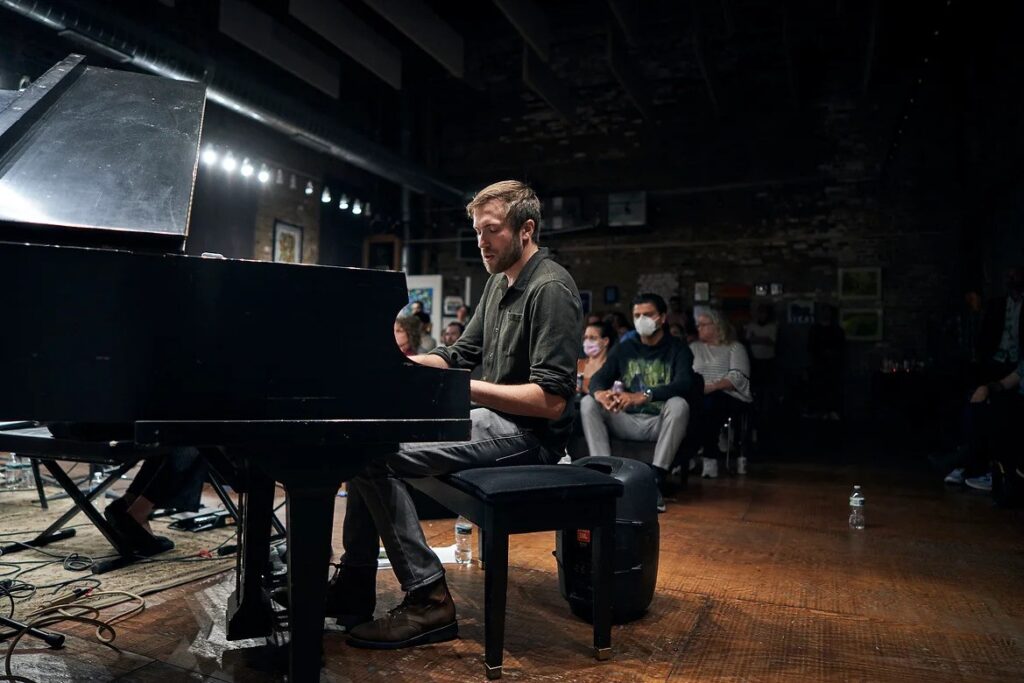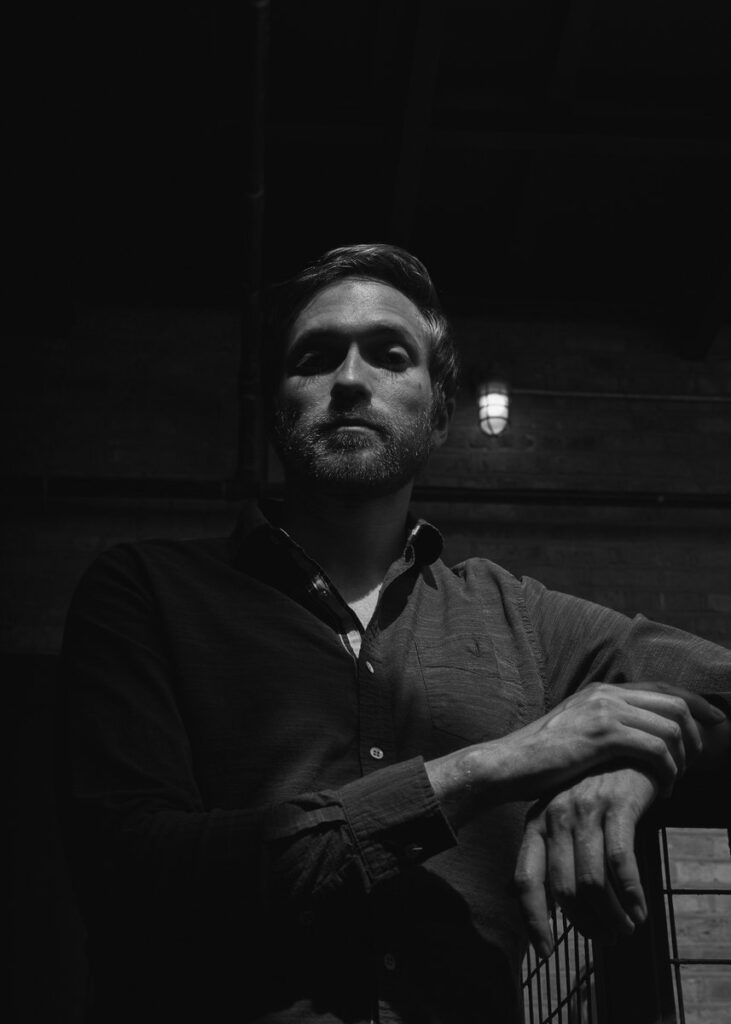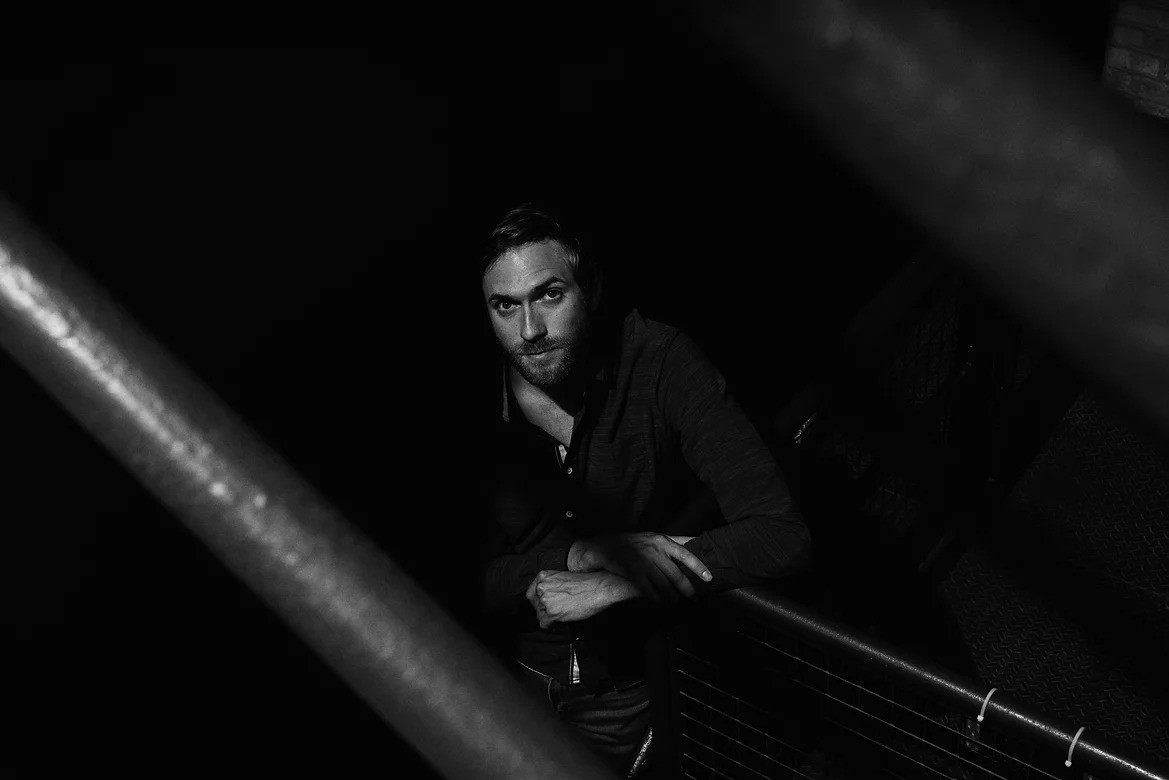Maxx McGathey’s Cinematic Jazz Odyssey in ‘Imaginary Eyes’
Maxx McGathey’s ‘Imaginary Eyes’ is a deep dive into a cinematic, jazz-infused soundscape, where dark moods and suspenseful atmospheres meet lush orchestral arrangements.
Emerging from the isolation of 2020, McGathey found solace at the keys of his childhood upright piano, where the first seeds of these compositions took root. What began as intimate piano pieces grew into a sprawling orchestral vision, as McGathey enlisted a cadre of talented musicians from Chicago’s jazz, rock, and classical circles to realize the full breadth of his ideas. Tracks like ‘The Staircase’ pulse with frenetic energy, while ‘Midnight’ whispers with noir melancholy, showcasing McGathey’s signature dramatic flair and dynamic shifts. The album’s expansive sound marks a shift from his past projects, such as the doom funk of Gramps The Vamp and the cinematic flourishes of Dark Canyon, revealing a more organic, jazz-driven approach. Yet, amidst the sweeping strings and triumphant brass, there’s still a rawness and urgency that speaks to McGathey’s roots in the electric, genre-defying side of Chicago’s music scene. At its heart, ‘Imaginary Eyes’ is not just a reflection of dark times but a testament to the resilience of creating with others—a journey from solitude to symphony.

“There are a lot of quiet moments of solitude on this record”
The album ‘Imaginary Eyes’ is rooted in your experience of isolation during 2020. How did those feelings of solitude and introspection influence your compositional style, and how did they shape the overall mood of the album?
Maxx McGathey: There are a lot of quiet moments of solitude on this record—moments when it’s just me and the piano. While most of the record is arranged for the full ensemble, these quiet piano moments are the heart of the album, and I don’t think I would have found them were it not for the setting of being home alone for long stretches of time. It was also from that isolation that I got the idea to arrange these tunes for a large ensemble. At that time, I missed making music with others so much that I was daydreaming about how awesome it would be to perform this music with a gigantic group of friends. At first, it was a daydream, but over time, it turned into a guiding idea for the project.
You mentioned that these compositions started as solo piano works but eventually evolved into lush orchestral arrangements. Can you walk us through the process of transforming these intimate piano pieces into full-fledged orchestral compositions?
My compositions usually start as improvisations at the piano. I find something that excites me and keep exploring it until a tune emerges. On some of the tunes on this record, I knew from the start which melodies, harmonies, grooves, and rhythms I was playing on the piano would be assigned to each instrument or section. Other times, it takes longer to decide, and it’s more of a puzzle to figure out how the final arrangement will sound. In those cases, I spend a lot of time in Logic (my digital audio workstation), mocking up the orchestra with software instruments while I move things around to get the desired effect. A lot of creativity happens at this stage, but I usually have an almost full piano piece by then. Often my left hand will become the bass/guitar/rhythm section, while my right hand becomes the winds and/or strings; however, the most interesting sounds happen when I break those rules and imagine the arrangements in a more abstract way.
“I love music that pulls you into a story with dramatic moments, surprises, and an immersive sound world.”
In ‘The Staircase,’ you draw inspiration from Hitchcock’s use of stairs to create a frenetic, thriller-like atmosphere. Can you elaborate on how cinematic elements and film noir aesthetics influence your music, particularly in the construction of tension and release?
I love music that pulls you into a story with dramatic moments, surprises, and an immersive sound world. My compositions aren’t necessarily specific stories with characters, plots, etc., but there is an emotional narrative through all my work, and I often imagine scenes that guide me toward finishing a piece. Having grown up in a movie-loving family, films are just part of my DNA. I’ve always been enthralled by the adventurous, sensationalist music of films from the mid-20th century, and that undoubtedly influences the way I compose, including the way I use tension and release to keep the audience on the edge of their seats.
When I started refining the music in this project and making decisions about what instruments I wanted to use, the aesthetics of ’50s and ’60s suspense films were an important guide for me. I could have taken this music in a plethora of different directions, making it sound scattered and confused, but I firmly believe that limitations spark creativity. Having that aesthetic reference helped keep me grounded in an organic, classic, familiar sound, enabling me to experiment and subvert the expectations of that world. Imaginary Eyes sounds classic, but also has a modern bite to it that comes out of nowhere and hits you when you least expect it.
Collaboration is a key part of ‘Imaginary Eyes,’ with nearly a dozen musicians contributing to the album. How did the collaboration process impact your original vision for these compositions?
Before this album, I had never written anything for such a large ensemble. I had a vision for how I wanted it to sound, but I was very inexperienced in how to best orchestrate the ensemble to reach that vision. Luckily, I was working with gracious and talented collaborators who took the time to workshop my music and help make it better for their instruments. They also added their personality to the parts in a way no one else could. My vision for the music was largely unchanged through the process, but my collaborators were key in bringing it all to life.
Tell us about the transition from your previous work; what are some parallels that you could draw?
All the recorded music I put out before this record was released under a band or project name. Having a “solo project” felt both liberating and intimidating at the same time. With no overarching band concept to guide me, there was more freedom to do whatever I wanted, but also the added pressure to figure out what defines me as an artist. That led to some really productive soul-searching about what makes me, me. There’s a lot of continuity here between the new album and my work with previous projects Gramps The Vamp and Dark Canyon: strong grooves, singable melodies, use of dynamic contrast, and a preference for darker sounds. However, there is also a more emotional core to this music that I haven’t allowed myself to dive into in previous projects. ‘Imaginary Eyes’ is more personal, more contemplative, and definitely the most honest, authentic thing I’ve ever created.
Given that this album was several years in the making, how did your relationship with the music evolve over time? Were there pieces or ideas that changed drastically as you developed them?
The main thing that changed over the last few years was my confidence in the sound of the project. When I started writing this music, I had no idea if I was going to be able to pull it off—it was grander in scope than anything I had done before. But as I arranged the music, assembled my band, played some shows, and got into the studio to record, I continued to grow in confidence and excitement. Also, my vision for the project was honed and sharpened, filling in many of the blurry areas with specifics. The closer I got to this project’s completion, the more I believed it was possible, freeing me up to be more creative along the way.
With the album’s release on vinyl, it seems like there’s an emphasis on creating a tactile, immersive listening experience. Can you elaborate on this?
I wanted to create something immersive that would pull the audience into the world of the music. I’m thrilled to be partnering with Nudie Records to offer this music on vinyl with a gatefold jacket featuring some incredible photography by Chicago artist Lenny Gilmore. The tactile experience of putting on a record has always been my favorite way to listen to recorded music. I’m happy to have my album heard on any medium, but with Lenny’s cinematic scenes on the jacket and a sound world reminiscent of a time when vinyl was the dominant medium, hearing ‘Imaginary Eyes’ on vinyl will be an amazing way to get immersed into this music.
The piano’s your old friend, your confessor, maybe even your therapist. How does your relationship with those keys drive everything else in the album?
I’ve been playing piano since I was 5 years old. I learned music at the same time I was learning how to read and write. Piano is a native tongue for me, a constant in my life, and the way that I process my experiences and feelings. Despite the lush arrangements and maximalist instrumentation, the main characters of this record are me and my piano, and every piece has at least one moment where the lights go down and it’s just a single spotlight on the keys leading the way.

What’s next for you?
I have been writing music non-stop over the past year and already have more than an album’s worth of new compositions ready to go. I’d like to get into the studio to record the sequel to Imaginary Eyes as soon as possible. You can expect a similar sound world and instrumentation, but with a more refined and conceptual approach. I’m also experimenting more with building improvisational moments into my compositions. Having gone through the process of making Imaginary Eyes, I now know how to effectively write for this group. There’s no question this time whether I can pull it off, so I am excited to take what I’ve learned and dive deeper into this world.
Klemen Breznikar
Maxx McGathey Official Website / Facebook / Instagram / Twitter / Bandcamp
Gramps The Vamp Facebook / Instagram / Twitter / Bandcamp
Nudie Records Official Website / Facebook / Instagram / Bandcamp / YouTube




